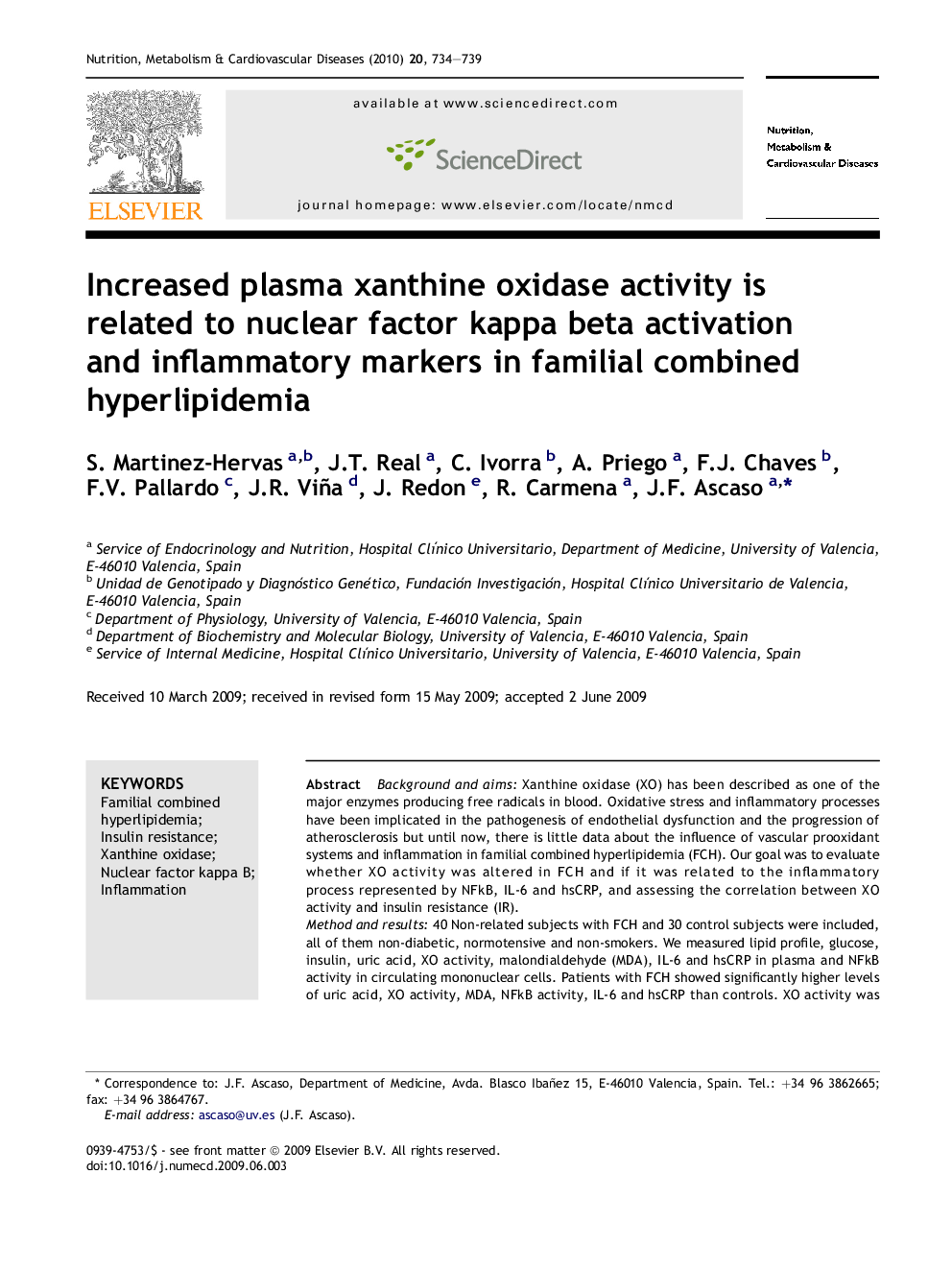| Article ID | Journal | Published Year | Pages | File Type |
|---|---|---|---|---|
| 3002878 | Nutrition, Metabolism and Cardiovascular Diseases | 2010 | 6 Pages |
Background and aimsXanthine oxidase (XO) has been described as one of the major enzymes producing free radicals in blood. Oxidative stress and inflammatory processes have been implicated in the pathogenesis of endothelial dysfunction and the progression of atherosclerosis but until now, there is little data about the influence of vascular prooxidant systems and inflammation in familial combined hyperlipidemia (FCH). Our goal was to evaluate whether XO activity was altered in FCH and if it was related to the inflammatory process represented by NFkB, IL-6 and hsCRP, and assessing the correlation between XO activity and insulin resistance (IR).Method and results40 Non-related subjects with FCH and 30 control subjects were included, all of them non-diabetic, normotensive and non-smokers. We measured lipid profile, glucose, insulin, uric acid, XO activity, malondialdehyde (MDA), IL-6 and hsCRP in plasma and NFkB activity in circulating mononuclear cells. Patients with FCH showed significantly higher levels of uric acid, XO activity, MDA, NFkB activity, IL-6 and hsCRP than controls. XO activity was independently related to NFkB activity with an odds ratio of 4.082; to IL-6 with an odds ratio of 4.191; and to IR with an odds ratio of 3.830. Furthermore, mean NFkB activity, IL-6 levels, and IR were highest in the highest percentile of XO activity.ConclusionsSubjects with FCH showed increased XO and NFkB activities and low grade inflammatory markers related to atherosclerosis. XO activity was correlated with higher inflammatory activity and IR. These data could explain, in part, the high cardiovascular disease risk present in these patients.
